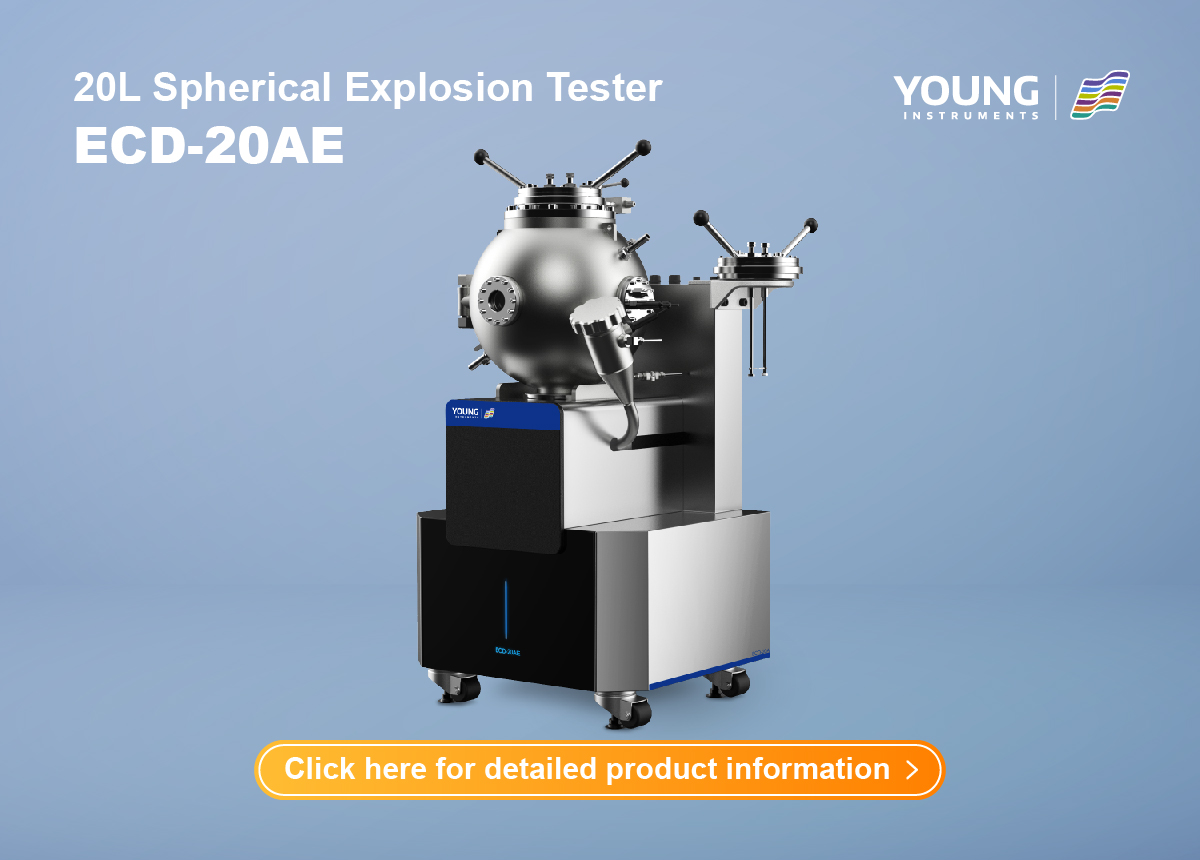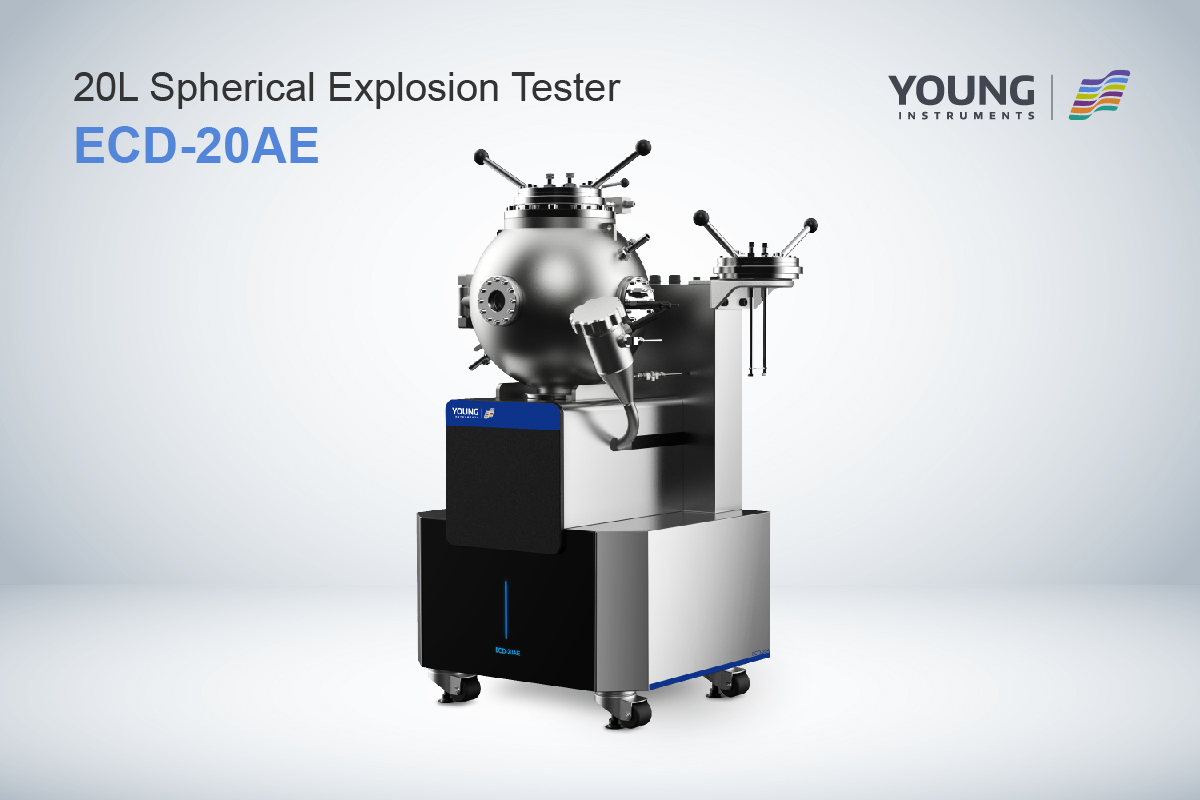Explosion Pressure Development Test: Understanding the Science Behind Explosions
If you work in an industry where dust explosions are a possibility, you need to understand the risks and take appropriate measures to protect your equipment and personnel. One way to assess the risk of a dust explosion is to conduct an explosion pressure development test. This test measures the reactivity of your dust to determine how fast it burns and the maximum explosion pressure that could be generated in a closed volume. Understanding these factors can help you design protective measures for your equipment and prevent dust explosions from occurring.
During an explosion pressure development test, the dust is ignited in a closed vessel, and the pressure and rate of pressure rise are measured. This information is used to calculate the maximum explosion pressure and the rate of pressure rise, which are important factors in designing equipment and safety measures. The test is especially relevant for industries such as food processing, pharmaceuticals, and chemical manufacturing where dust explosions can have catastrophic consequences.
If your industry involves handling combustible dust, it is essential to take the necessary precautions to prevent dust explosions. Conducting an explosion pressure development test is one way to assess the risk of a dust explosion and design effective safety measures. By understanding the reactivity of your dust and the maximum explosion pressure that could be generated, you can take steps to protect your equipment and personnel and prevent dust explosions from occurring.
Fundamentals of Explosion Pressure Development
Definition and Basic Concepts
The Explosion Pressure Development Test (EPDT) is a test that determines the maximum pressure generated by an explosion of a dust cloud in a closed vessel. This test is essential for designing protective measures for industrial equipment in which dust explosions may occur. The test determines the reactivity of the dust and the maximum explosion pressure that could be generated by the dust in a closed volume. The test is conducted in a closed vessel, and the dust sample is dispersed in the vessel. The dust is then ignited, and the pressure generated by the explosion is measured.
The five ingredients required for a dust explosion are combustible particulates sufficiently small to burn rapidly when ignited, a suspended cloud of these combustible particulates at a concentration above the minimum explosible concentration (MEC), oxygen, an ignition source, and a confined space. The MEC is the minimum concentration of dust in the air required to cause an explosion.
Physics of Explosion Dynamics
The explosion dynamics of a dust cloud are governed by the laws of thermodynamics and fluid dynamics. The explosion process can be divided into three phases: ignition, flame propagation, and pressure development. During the ignition phase, the ignition source raises the temperature of the dust cloud to its ignition temperature, causing the dust to ignite. The flame propagation phase is where the flame propagates through the dust cloud, releasing energy and generating heat. During the pressure development phase, the energy released during the flame propagation phase generates a pressure wave that travels through the dust cloud, causing the pressure to increase rapidly.
The maximum explosion pressure generated during the pressure development phase depends on the dust concentration, particle size distribution, and the confinement of the dust cloud. The confinement of the dust cloud affects the rate of pressure rise and the duration of the pressure pulse. The particle size distribution of the dust affects the reactivity of the dust and the maximum explosion pressure that could be generated. The dust concentration affects the minimum ignition energy and the maximum explosion pressure that could be generated.
Test Methodology
Sample Preparation
Before conducting the Explosion Pressure Development Test, you need to prepare the sample. The sample should be representative of the dust you are trying to test. It is recommended to take the sample from the process where the dust is generated. The sample should be dry and finely ground. You need to sieve the sample to remove any impurities.
Instrumentation and Equipment
To conduct the Explosion Pressure Development Test, you need to have the following equipment:
- Explosion vessel: The vessel should be made of a material that can withstand the pressure of the explosion. The volume of the vessel should be at least 20 liters.
- Ignition source: You can use a spark igniter or a pyrotechnic igniter.
- Pressure transducer: The transducer should be able to measure the pressure up to at least 10 bar.
- Data acquisition system: You need a system to record the pressure-time curve during the test.
Procedure Steps
The Explosion Pressure Development Test follows the procedure outlined in EN 14034-1:2004+A1:2011. The steps involved in the test are as follows:
- Load the dust sample into the explosion vessel.
- Close the vessel and connect the pressure transducer and the ignition source.
- Purge the vessel with nitrogen to remove any air.
- Ignite the dust sample using the ignition source.
- Record the pressure-time curve using the data acquisition system.
- Analyze the pressure-time curve to determine the maximum pressure and the rate of pressure rise.
It is important to note that the Explosion Pressure Development Test provides information on the reactivity of the dust and the maximum explosion pressure that could be generated by the dust in a closed volume. This test does not provide information on the explosibility of the dust.
Data Analysis
When conducting an Explosion Pressure Development Test, there are two main parameters that are analyzed: pressure measurement and rate of pressure rise.
Pressure Measurement
The maximum explosion pressure (Pmax) is the highest pressure reached during the explosion. This value is important for designing protective measures for industrial equipment where dust explosions may occur. The Pmax value can be determined by measuring the pressure in a closed vessel during an explosion. The pressure measurement can be recorded using a pressure transducer or a pressure gauge.
Rate of Pressure Rise
The maximum rate of pressure rise (dP/dt)max is the highest rate of pressure increase during the explosion. This value is important for assessing the severity of the explosion. The dP/dt value can be determined by measuring the pressure change over time during an explosion. The rate of pressure rise can be recorded using a pressure transducer or a pressure gauge.
During the Explosion Pressure Development Test, the Pmax and dP/dt values are determined by igniting a dust cloud at different concentrations and measuring the resulting pressure changes. The test is conducted to understand the reactivity of the dust and the maximum explosion pressure that could be generated by the dust in a closed volume.
Once the Pmax and dP/dt values are determined, they can be used to calculate the dust constant Kst value. The Kst value is an important parameter for assessing the explosion severity of the dust. It is calculated using the following formula:
Kst = Pmax × (dP/dt)max^(1/2)
Overall, the data analysis from the Explosion Pressure Development Test provides valuable information for designing protective measures and assessing the explosion severity of the dust.
Safety and Precautions
When conducting an Explosion Pressure Development Test, it is crucial to take necessary safety precautions to minimize the risk of accidents. The following subsections outline the hazard mitigation and personal protective equipment required during the test.
Hazard Mitigation
To minimize the risk of accidents, it is essential to conduct the Explosion Pressure Development Test in a safe environment. The test should be carried out in a designated area, away from any flammable or explosive materials. The area should also be well-ventilated to prevent the accumulation of combustible dust.
Before conducting the test, it is recommended to perform a hazard assessment to identify potential hazards and develop a mitigation plan. The mitigation plan should include measures to prevent dust accumulation, minimize ignition sources, and ensure proper ventilation.
Personal Protective Equipment
During the Explosion Pressure Development Test, it is essential to wear appropriate personal protective equipment (PPE) to minimize the risk of injury. The following table outlines the recommended PPE for conducting the test:
| PPE | Description |
|---|---|
| Safety Glasses | Protects the eyes from dust and debris |
| Respirator | Protects the lungs from inhaling dust |
| Gloves | Protects the hands from dust and debris |
| Lab Coat | Protects the body from dust and debris |
It is essential to select PPE that is appropriate for the test conditions and the type of dust being tested. The PPE should be inspected before use to ensure it is in good condition and provides adequate protection.
By following these safety precautions and wearing the appropriate PPE, you can minimize the risk of accidents and conduct the Explosion Pressure Development Test safely.
Applications and Relevance
The Explosion Pressure Development Test is an essential tool for ensuring industrial safety and material classification. This test provides valuable information about the reactivity of dust and the maximum explosion pressure that could be generated by it in a closed volume.
Industrial Safety
The Explosion Pressure Development Test is particularly relevant in the design of protective measures for industrial equipment in which dust explosions may occur. The test helps in identifying the potential hazards of dust explosions, which can cause significant damage to equipment and facilities, as well as pose a serious threat to human life.
By understanding the explosion pressure development of dust, engineers and safety professionals can design equipment and facilities that are better equipped to handle the risks associated with dust explosions. This can include the installation of explosion-proof equipment, the use of dust collection systems, and the implementation of safety protocols to reduce the risk of explosions.
Material Classification
The Explosion Pressure Development Test is also used in the classification of materials based on their explosion characteristics. This is important for ensuring that materials are handled and stored in a safe manner, and that appropriate safety measures are in place to prevent accidents.
By testing the explosion pressure development of different materials, it is possible to classify them based on their explosion severity. This information can then be used to determine the appropriate storage and handling requirements for these materials, as well as the necessary safety measures to prevent explosions.
Overall, the Explosion Pressure Development Test is a critical tool for ensuring industrial safety and material classification. By providing valuable information about the explosion characteristics of dust and other materials, this test can help to prevent accidents and protect human life.








































